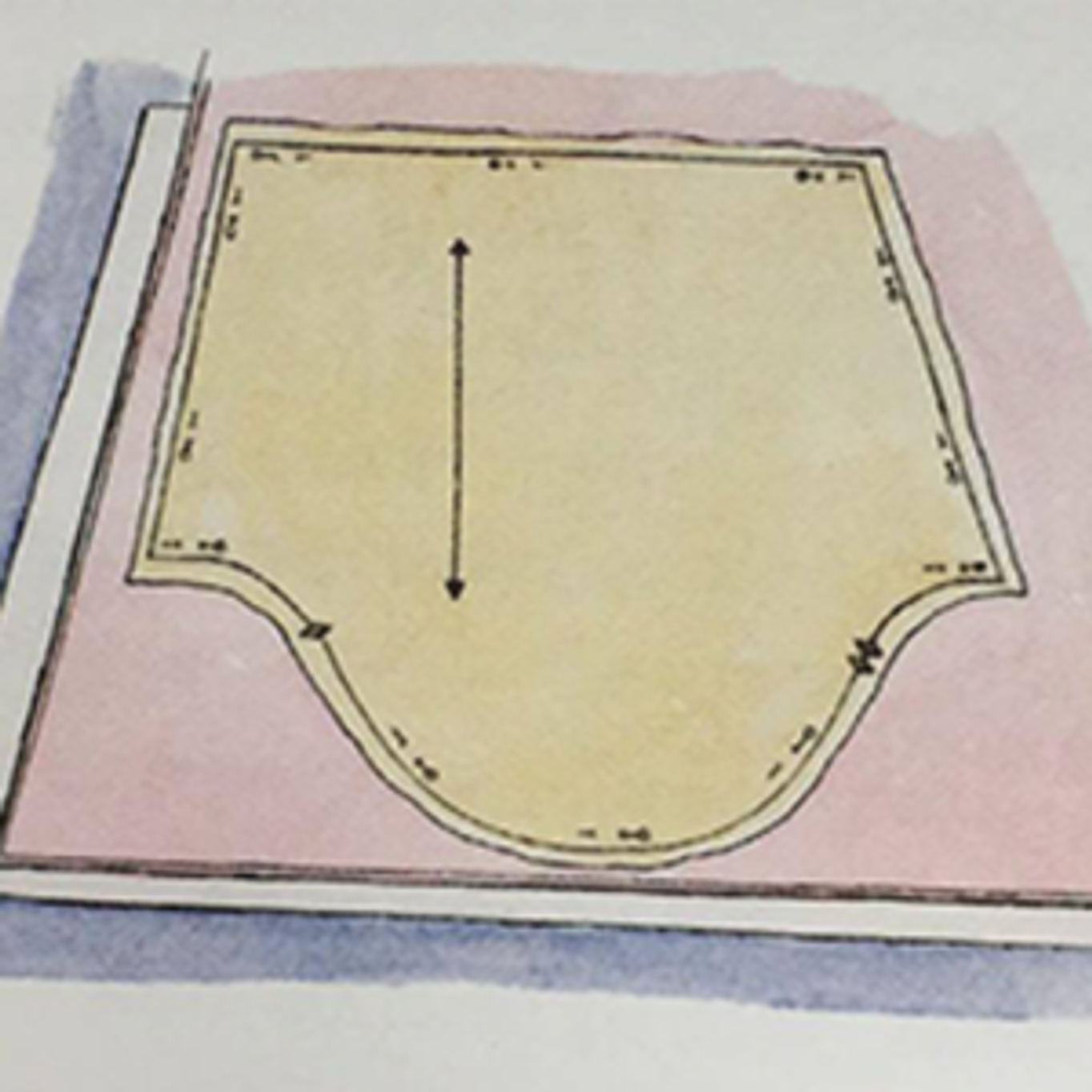
The key to sewing slippery fabrics - silk, polyester, rayon and acetate - is to avoid overhandling them. These delicate fabrics mar easily. Set the stitch length to between 10 and 15 stitches per inch (2.5cm) and hold the fabric taut while stitching. You might need to loosen the thread tension and lighten the presser foot pressure slightly. Make a practice seam with a scrap piece of your fabric. Stitch with a straight-stitch presser foot or an even-feed foot to keep the fabric from creeping.
If the fabric does creep or slip, baste the seam first by hand or use basting tape to hold the fabric in place. Sew with plain, straight-stitch seams. If the fabric ravels pink the seam allowances or apply liquid fray preventer to the edges. If fabric is sheer, make French seams.
- Prewash the fabric, lining (and interfacing if neccessary) following the fabric care instructions. Before lying out the pattern, fold the fabric right side out so the wrong sides are together.
- Follow the "with nap" layout to avoid shading variations in the finished garment.
- Use extra-fine pins or fabric weights to hold the paper pattern in place.
- If the fabric is very slippery, place tissue paper under it. Pin through the paper pattern, fabric and tissue paper.
- Cut pieces with a rotary cutter to prevent the fabric from shifting.
- You can also cut with bent-handled dressmaker's shears - one blade rests on the cutting surface. Scissors with serrated blades help grip the slippery fabric while cutting, trimming and grading
To find the right iron temperature or slippery fabric, press a scrap piece of the fabric first, beginning with the iron on a low setting. Raise the temperature slowly as needed. Use another fabric scrap piece of fabric first, beginning with the iron on a low setting. Raise the temperature slowly, as needed. Use another fabric scrap for press cloth, right side down. Don't press too hard. If the fabric is very lightweight, seam allowance edges might be visible on the right side. To avoid this, press the seams on a seam roll or slip a sheet of paper between the seam allowance and fabric.
For better control when cutting slippery fabrics, cover the cutting surface with a sheet or flannel-backed vinyl table cloth (flannel side up).
